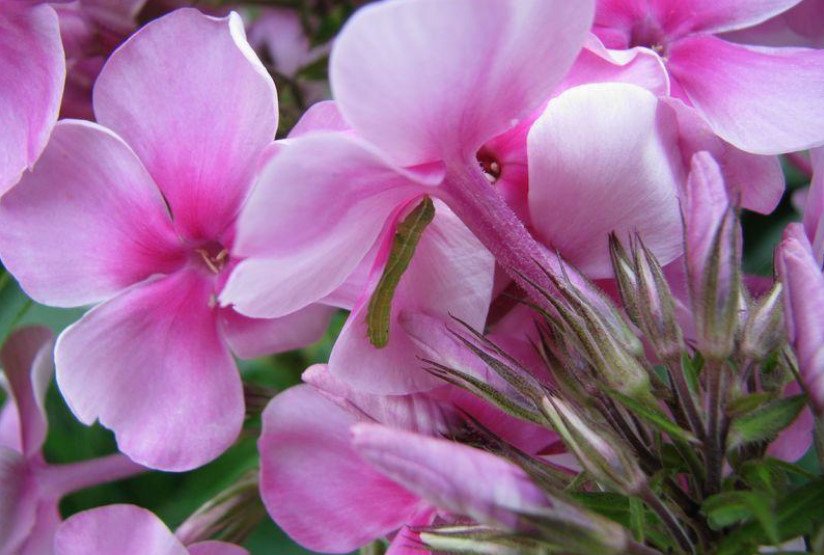
Today in this article we will focus on pests.
Nematode
Nematode-the scourge of many collections of Phlox, especially old, where Phlox contained in the same place for many years.
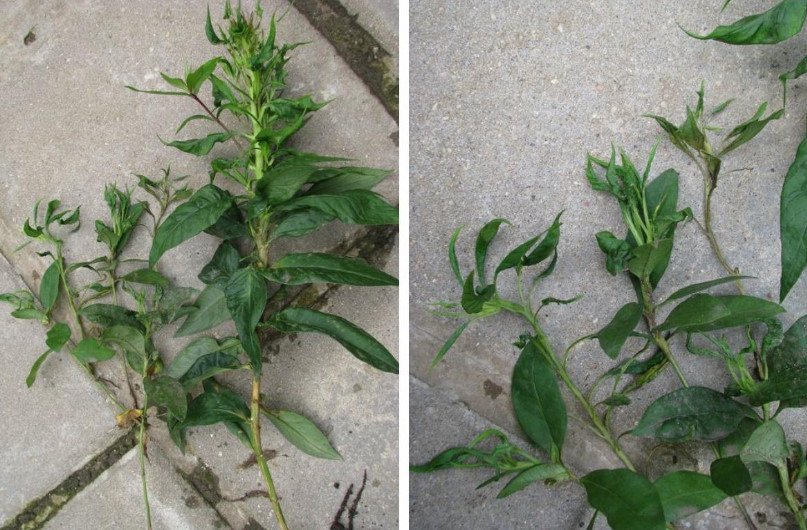
Nematode-a microscopic worm with a thin filamentous body, living in plant tissues and feeding on their juice. One female nematode can lay more than 100 eggs, which are more resistant to adverse conditions than adults. And nematode larvae can remain viable for more than a year even in dried stems and leaves.
Shoots, affected by nematode, look depressing: they are curved, noticeably lagging behind in growth, the leaves are twisted, wrinkled at the edges, at the end of the branches the leaves are threadlike.
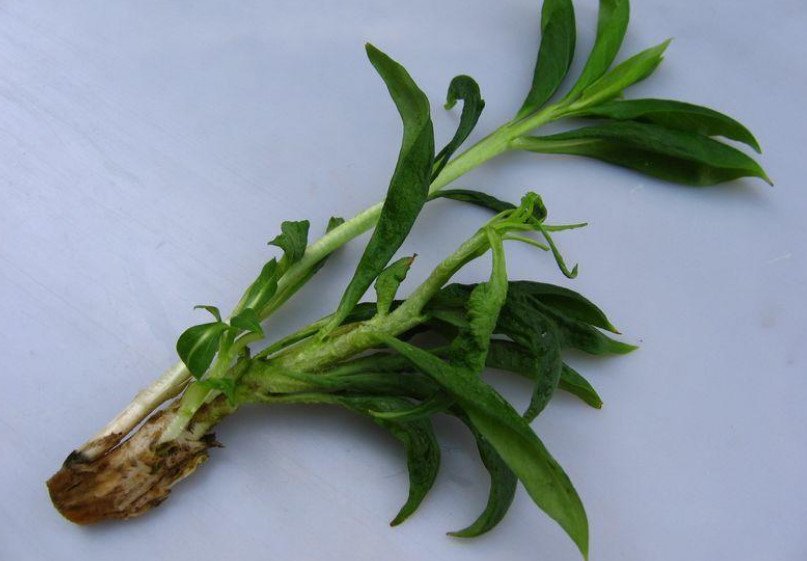
The stem becomes brittle, with ugly swellings.

Most often in the literature mentioned leaf and stem nematodes, root and Gallic Phlox are less common. It is believed that nematodes winter in the lower part of the old stems and rhizome. In the spring, when the stems grow to a certain height and the weather becomes warmer, the nematode rises and affects the plants.
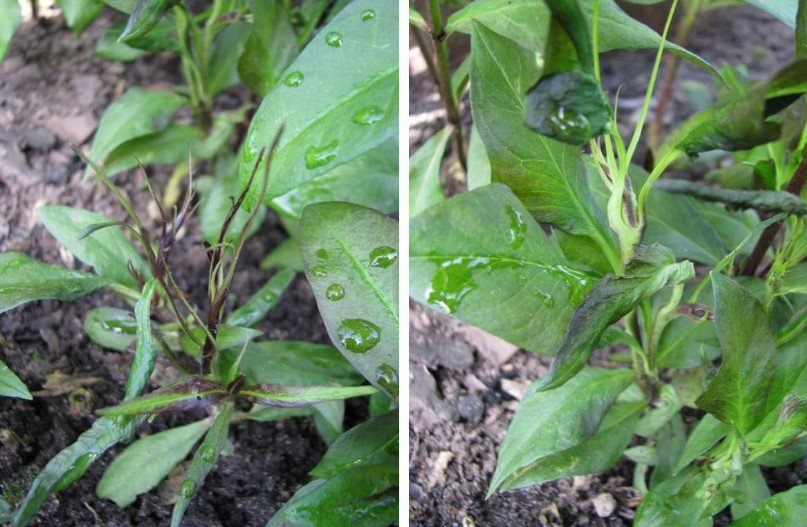
Ways to fight nematode
Widely advertised methods of dealing with nematode surprise, to put it mildly “naivete”. I, for example, actively and persistently used for several seasons, at least three different antihelminthic drugs that growers strongly recommended in the fight against nematode Phlox. At the same time I was well aware that their action can not affect the nematode. These drugs act on roundworms, temporarily paralyzing their muscles. It helps a person, but not Phlox. Similarly, useless and infusions of various herbs, also recommended by “folk healers” Phlox.
Following some advice from the same sources, I treated the nematode-infected Bush with hot water. But the trouble is that the evil worm dies at a temperature above + 54 °C, and the living Phlox can withstand a maximum of + 43 °C
Drugs that destroy soil pests, such as wireworm and cabbage fly larvae, also did not prevent “frolic” nematode in patients with Phlox.
Conducted long-term experiments with the drug, which has contact and systemic effects. It penetrates into the upper cell layers of the leaves and provides long-term protection against many garden pests. Treated with medication the bushes of phloxes in full, at the same time spilling abundantly the soil directly under the tree. Immediately after spraying and watering covered with a wet Bush film at night, thus providing a longer effect of the drug on the plant. Due to its properties, the drug is not washed off by rain after drying on the plant, it is easy to use, but the result in the fight against nematode is almost zero, unfortunately.
Often growers are trying to find salvation, planting in abundance around the Tagetes. They supposedly have a destructive effect on the nematode. It turned out that not all types of marigolds are suitable for fighting the parasite, but only rejected or thin-leaved. And in various sources of information about the miraculous species were contradictory. As a result, it turned out that marigolds attract only the Gallic nematode and do not destroy it — she just prefers to settle on the roots of popular annuals. In late autumn the roots of the marigolds with the “harvest” of root-knot nematodes encouraged to destroy, and the leaves dig up the contaminated soil, allegedly to scare away those worms. To some extent, this method works in the case of the Gallic nematode. But Phlox are subject to stem and leaf nematode, and here, unfortunately, marigolds are not assistants.
Do not save infected Phlox and annual planting around them Tanacetum parthenium. These lovely “daisies” grow on my site everywhere because give abundant self-seeding, being, in fact, minors. I think that their effect on the nematode similarly notorious Tagetes, and I plant around them Phlox with preventive and aesthetic goals for many years.
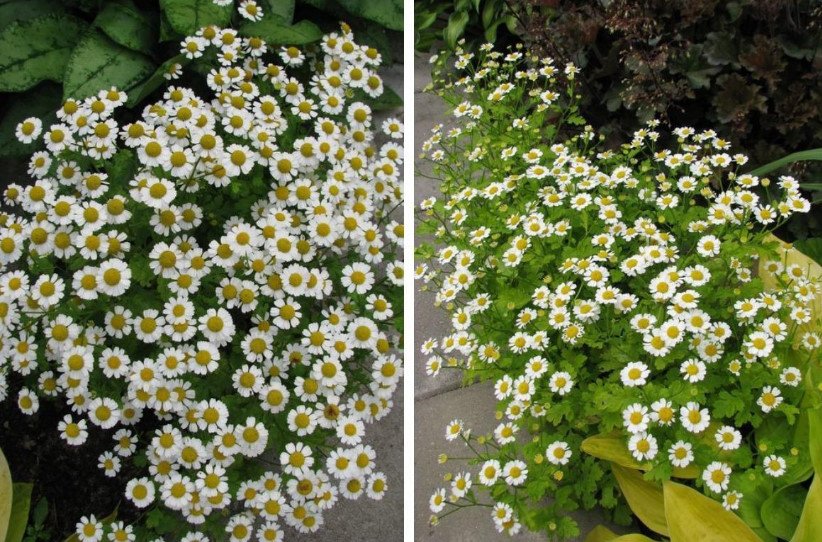
If the collection of phloxes heavily infested with nematodes, experienced flexbody is recommended to use the following method of struggle. In late summer-early autumn, you need to break off the tops of weakly affected shoots, and severely affected shoots removed completely from the Bush, breaking them at the base. It is believed that pests during the season rise and concentrate in the upper parts of the shoots, as well as in flowers and seed boxes. With the onset of cold weather, they begin to gradually descend down to the base of the Bush and in the rhizome, where they successfully winter. But experience shows that in this way it is possible to achieve only the containment of the nematode at a certain level, no more.
For preventive purposes, experts recommend using well-rotted manure based on straw for planting Phlox. It is proved that such a mixture, rotting, forms a colony of fungi that act oppressively on the development of nematode eggs and adult pests including. This method is known for a long time. I am on my personal experience that those Phlox in the planting hole which I added the recommended mix, almost amazed nematode. Moreover, every year I try to mulch planting Phlox good rotted manure based on straw. The results are encouraging, but one hundred percent guarantee does not give. Unfortunately, according to my long-term observations, it turned out that heavily infected bushes continued from time to time to give sick shoots for a long time, after planting in specially treated soil based on rye straw, although the degree of plant damage has decreased markedly.
Colleagues told that the following method was used to disinfect the soil from the nematode for planting Phlox:
- In the area under the winter sowed Secale, spring sown white mustard and in June all smelled.
- Under the winter once planted Secale summer again plowed, planted in the fall Phlox.
To this day, no nematodes have been observed in this area.
So what to do with Phlox, who suffers from a malicious worm? Regardless of the degree of damage, I recommend cutting those branches in the Bush that have a healthy appearance, or make a spring cuttings of young growing shoots in the earliest possible time, until the nematode has not yet activated and began to rise from the rhizome up the young stems. Usually this period occurs when the Phlox grows to a height of 7-12 cm.
- Break out only those shoots that look externally healthy.
- Since the nematode is activated in a humid environment, it is recommended to wash the cuttings in running water and only then planted in the greenhouse for rooting. The infected Bush is usually destroyed.
- To Phlox, grown from these cuttings, you should pay increased attention and at the first signs of infection with the nematode, repeat the procedure again.
Insects are also pests of Phlox
Insects, to a lesser extent plague Phlox, however, can greatly reduce the ornamental plant in mass raids. For example, Thysanoptera damage the surface of the petals, and their unsightly whitish traces in the form of vague spots become very noticeable on dark-colored varieties.
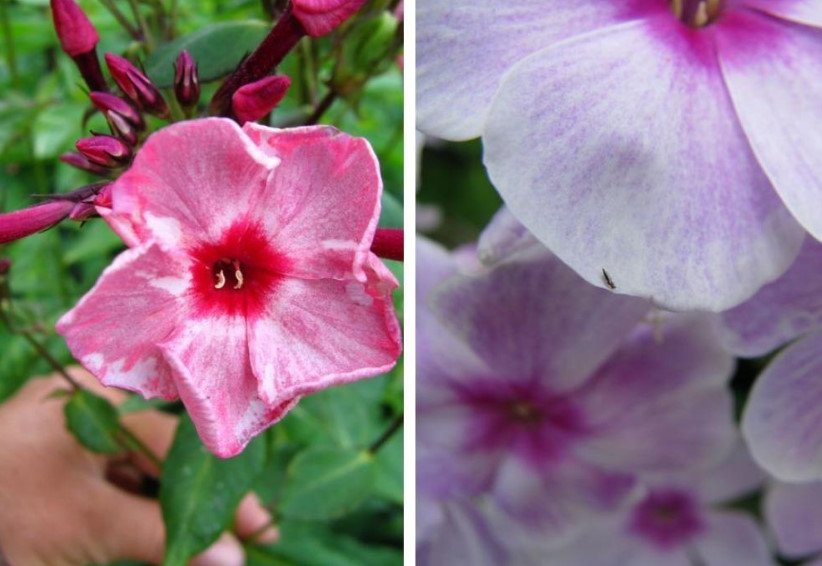
Timely treatment of inflorescences at the time of budding and the beginning of flowering with systemic insecticides helps to cope with them.
Caterpillars and winter shovels poke holes in the buds, causing the flowers are similar to paper Christmas snowflakes.
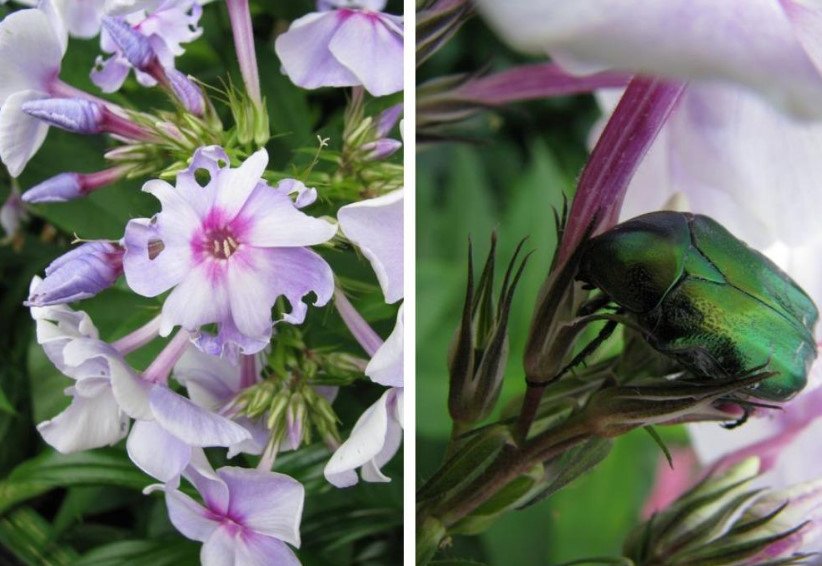
It is not easy to find pests, they hide in dense thickets of flowers and buds. But with a little perseverance you can collect a good “crop” of caterpillars by hand, without resorting to insecticide treatments.
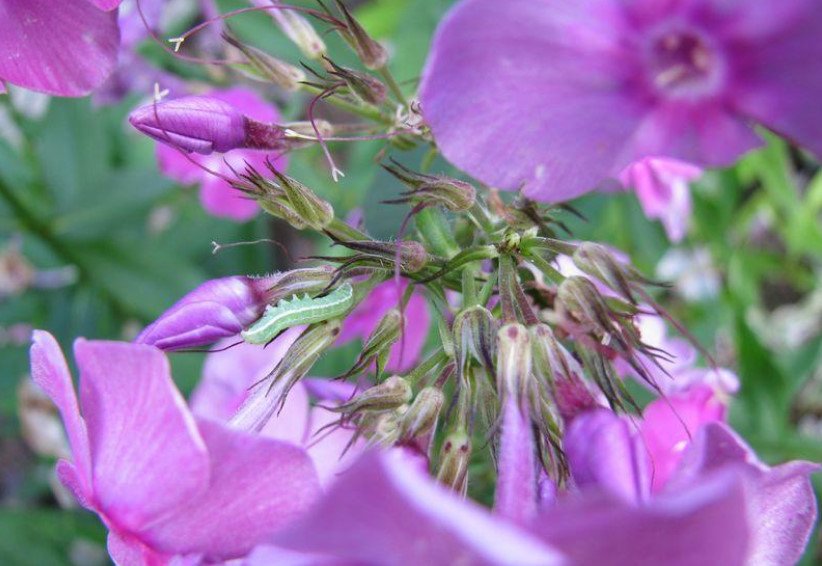
It is much more difficult to catch Cetonia aurata and Tropinota hirta, which break the long and tender tubes of corollas, thus getting to the cherished sweet nectar. These flying beetles are also keen, and voracious, and can severely damage the decorative effect lush buds, making neat flowers in a shapeless ragged “rags”, which will be sad and helpless drooping on stalks and create chaos and sloppiness in the hitherto neat “caps” of Phlox.
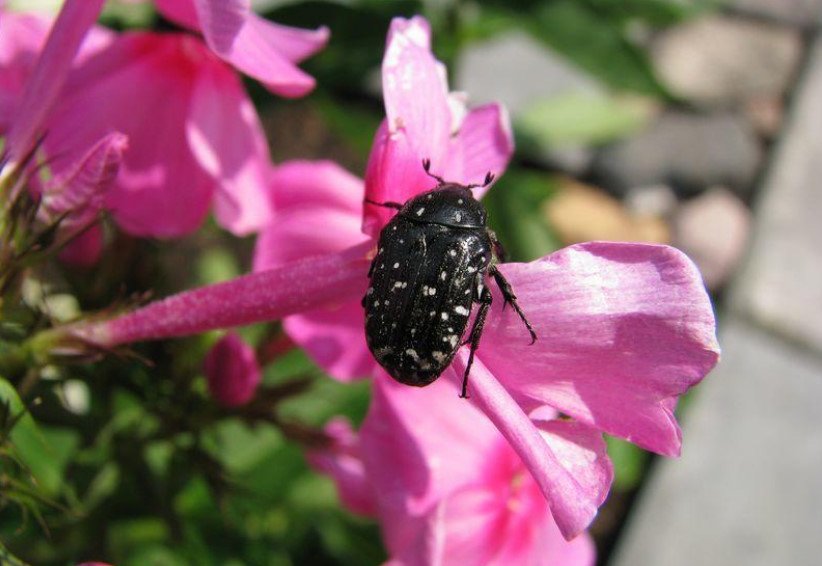
Occasionally” hole ” young leaves can grasshoppers, which are found on Phlox usually in may-June. Apparently, it was during this period among the jumping insects appear few Phlox gourmets.
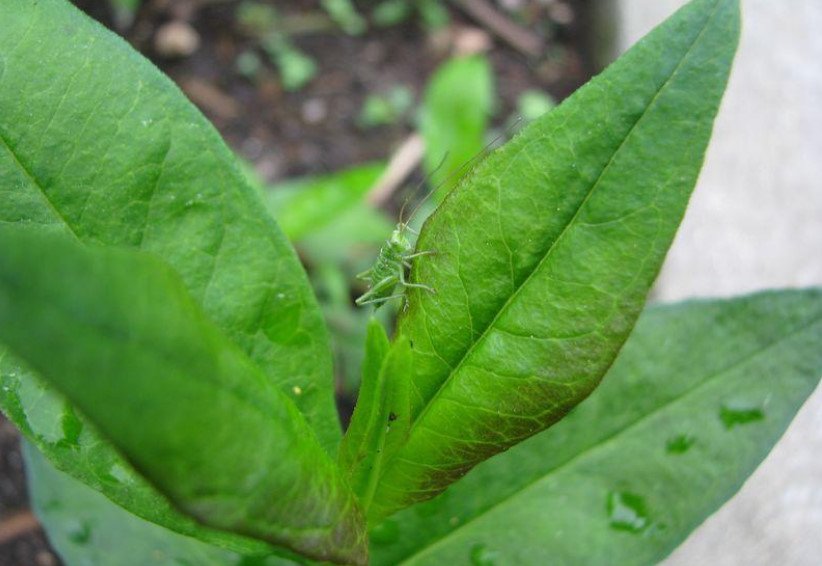
Slugs eat the leaves of Phlox with much greater pleasure, but even their excellent appetite is not able to cause severe damage to adults and strong bushes.

It is more difficult for young plants and seedlings, all the green mass of which can serve only a small portion of the daily diet of dangerous Gastropoda. My methods of dealing with slugs, as a rule, are reduced to a simple and unpretentious use of emerald-blue granules of the popular pesticide against annoying shellfish — metaldehyde.
I hope that my observations and experience in the fight against diseases and pests of Phlox will bring real benefit to Amateur Phlox growers, as well as make more sober and conscious attitude to the recommendations of “advanced theorists” and trust only those of their advice, which is supported by practical experience and positive results.



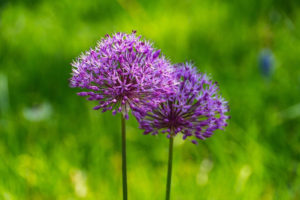
Leave a Reply